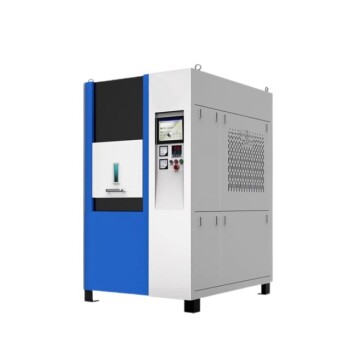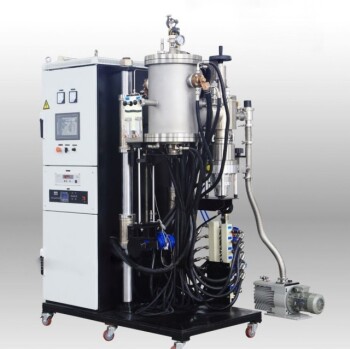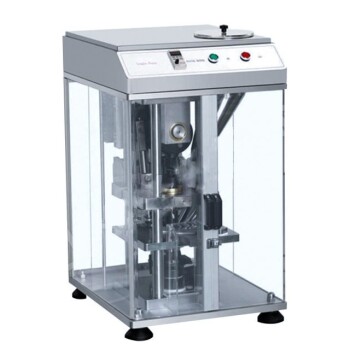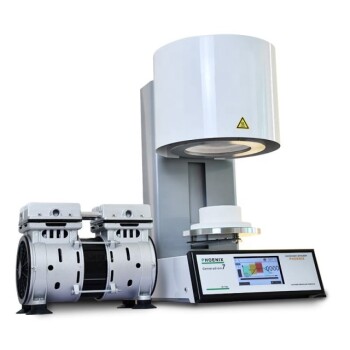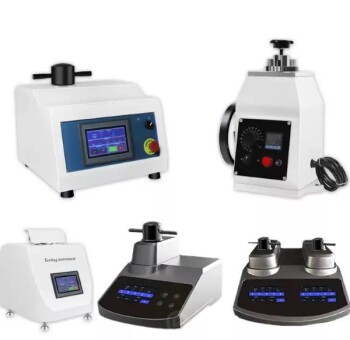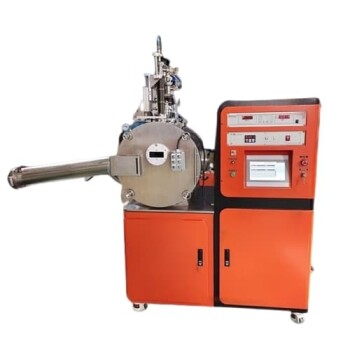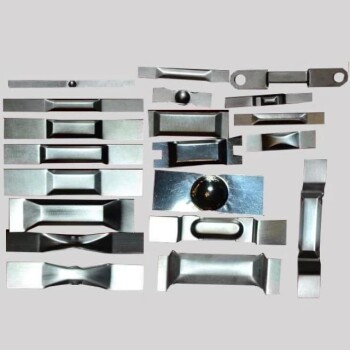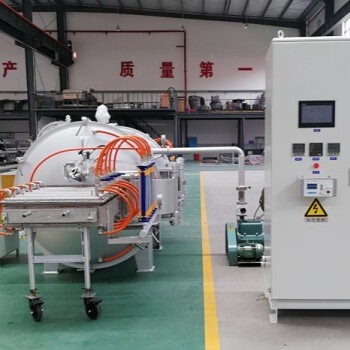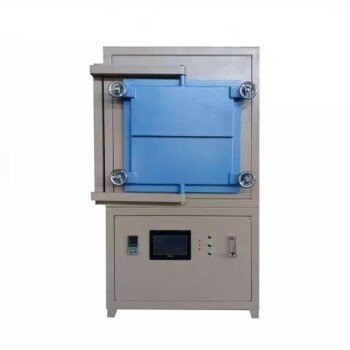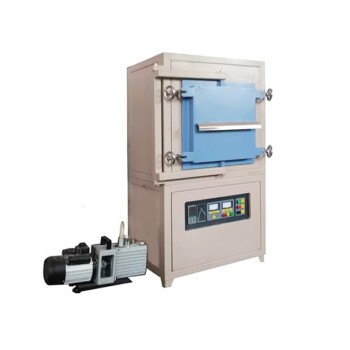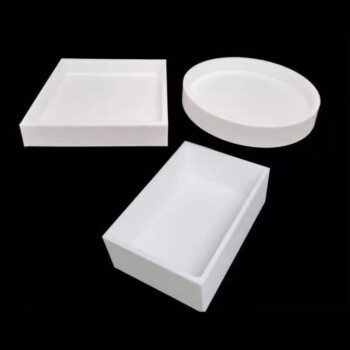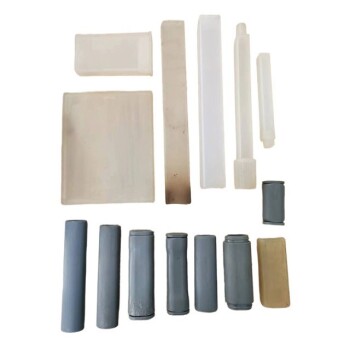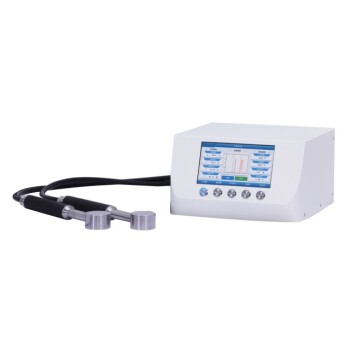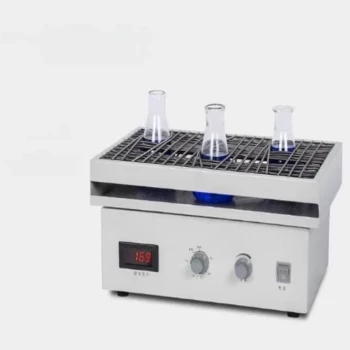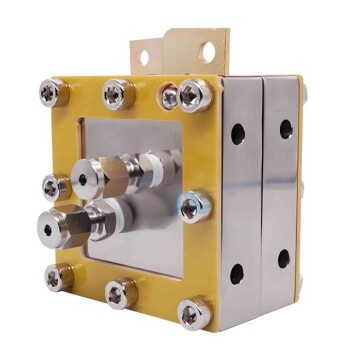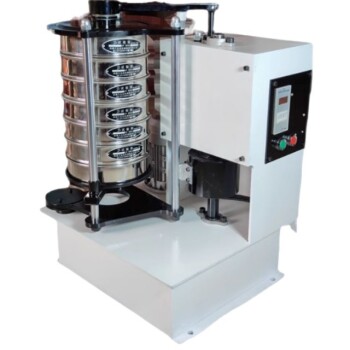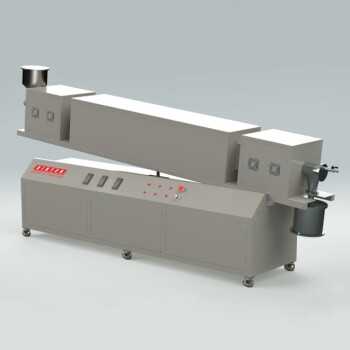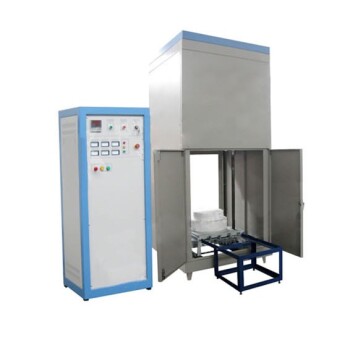The primary parameters for spark plasma sintering (SPS) are sintering temperature, applied pressure, heating rate, and dwell time. These variables are precisely controlled to rapidly consolidate powdered materials into dense solids. Typical ranges involve temperatures of 800-1000°C, pressures of 60-80 MPa, and extremely fast heating rates of 100-300°C per minute, with short holding times of only 5 to 15 minutes.
Spark plasma sintering is not about brute force; it is about control. Its power comes from combining high pressure with rapid, localized electrical heating to achieve full density at lower overall temperatures and in a fraction of the time required by conventional methods.

The Core Mechanisms of SPS
To understand the parameters, you must first understand how spark plasma sintering—also known as a Field-Assisted Sintering Technique (FAST)—actually works. It is fundamentally different from a conventional furnace.
Field-Assisted Heating
The defining feature of SPS is the use of a pulsed direct current (DC) that passes through a conductive die (typically graphite) and, if possible, the material sample itself.
This creates heat in two ways: externally from the hot die, and internally via Joule heating wherever the electrical current flows through the powder compact. This dual heating method is exceptionally fast and uniform.
The Role of Pressure
Simultaneously, a constant uniaxial pressure is applied to the powder. This pressure forces the particles together, aiding in plastic deformation and the collapse of pores as the material softens at high temperatures.
The Stages of Densification
The process is often described in three stages: initial plasma heating at the contact points between powder particles, followed by widespread Joule heating, and finally, pressure-assisted plastic deformation to achieve final densification.
A Breakdown of Key SPS Parameters
Each parameter is a lever that allows you to influence the final properties of your material, from its density to its microscopic grain structure.
Sintering Temperature
Temperature provides the thermal energy needed for atoms to diffuse across particle boundaries, which is the fundamental mechanism of sintering. A key advantage of SPS is that the required densification temperatures are often hundreds of degrees lower than in conventional sintering.
Applied Pressure
Pressure is the driving force for particle rearrangement and plastic flow. Higher pressures can help achieve full density at even lower temperatures or in shorter times, but excessive pressure can damage the equipment or the sample.
Heating Rate
The heating rate is a critical and unique parameter in SPS. Extremely fast rates (e.g., >100 °C/min) allow the material to reach its densification temperature so quickly that there is little time for undesirable grain growth to occur.
Dwell (or Holding) Time
This is the amount of time the sample is held at the peak sintering temperature. Because SPS is so efficient, dwell times are very short—often just a few minutes. This further helps to preserve the material's original fine-grained microstructure.
Understanding the Trade-offs
The power of SPS lies in balancing its parameters to achieve a specific outcome. Simply maximizing every variable is rarely the correct approach.
The Density vs. Grain Size Dilemma
The primary trade-off in nearly all sintering is achieving maximum density without excessive grain growth. Large grains can degrade mechanical properties. SPS excels here by using short dwell times and fast heating rates to limit the time available for grains to grow.
Microstructure Preservation
SPS is often chosen specifically to preserve a unique starting microstructure. For example, if a powder has been cryogenically milled to have nano-sized grains, SPS can consolidate it into a solid part while keeping those grains small, thanks to the low temperatures and short times involved.
Material and Equipment Limitations
The process relies on a conductive graphite die. This limits the maximum achievable temperature and can lead to carbon contamination or reactions with certain materials. The applied atmosphere can also be critical, as SPS has been shown to reduce hydrogen and nitrogen levels in some materials.
Selecting Parameters for Your Goal
Your choice of parameters should be dictated entirely by your end goal for the material.
- If your primary focus is maximizing density: You will likely operate near the upper end of the material's allowed temperature and pressure range, balancing it with a short dwell time to prevent grain growth.
- If your primary focus is preserving a fine-grained microstructure: Prioritize extremely fast heating rates and minimal dwell times, even if it means accepting a slightly lower final density.
- If your primary focus is forming a specific crystalline phase: Your parameter window may be very narrow, requiring precise control of temperature and pressure to promote the desired phase while avoiding its decomposition.
Ultimately, mastering spark plasma sintering is about using its unique combination of speed and pressure to engineer microstructures that are unattainable with conventional techniques.
Summary Table:
| Parameter | Typical Range | Primary Function |
|---|---|---|
| Sintering Temperature | 800 - 1000 °C | Provides thermal energy for atomic diffusion and densification. |
| Applied Pressure | 60 - 80 MPa | Drives particle rearrangement and plastic deformation. |
| Heating Rate | 100 - 300 °C/min | Rapidly reaches sintering temperature to limit grain growth. |
| Dwell Time | 5 - 15 minutes | Holds peak temperature to achieve final density without microstructural degradation. |
Ready to achieve superior material density and fine-grained microstructures in your lab?
At KINTEK, we specialize in providing advanced lab equipment and consumables for cutting-edge techniques like Spark Plasma Sintering. Our expertise can help you select the right equipment and optimize your SPS parameters to meet your specific research and production goals.
Contact our experts today to discuss how KINTEK's solutions can enhance your sintering process and drive your innovations forward.
Visual Guide
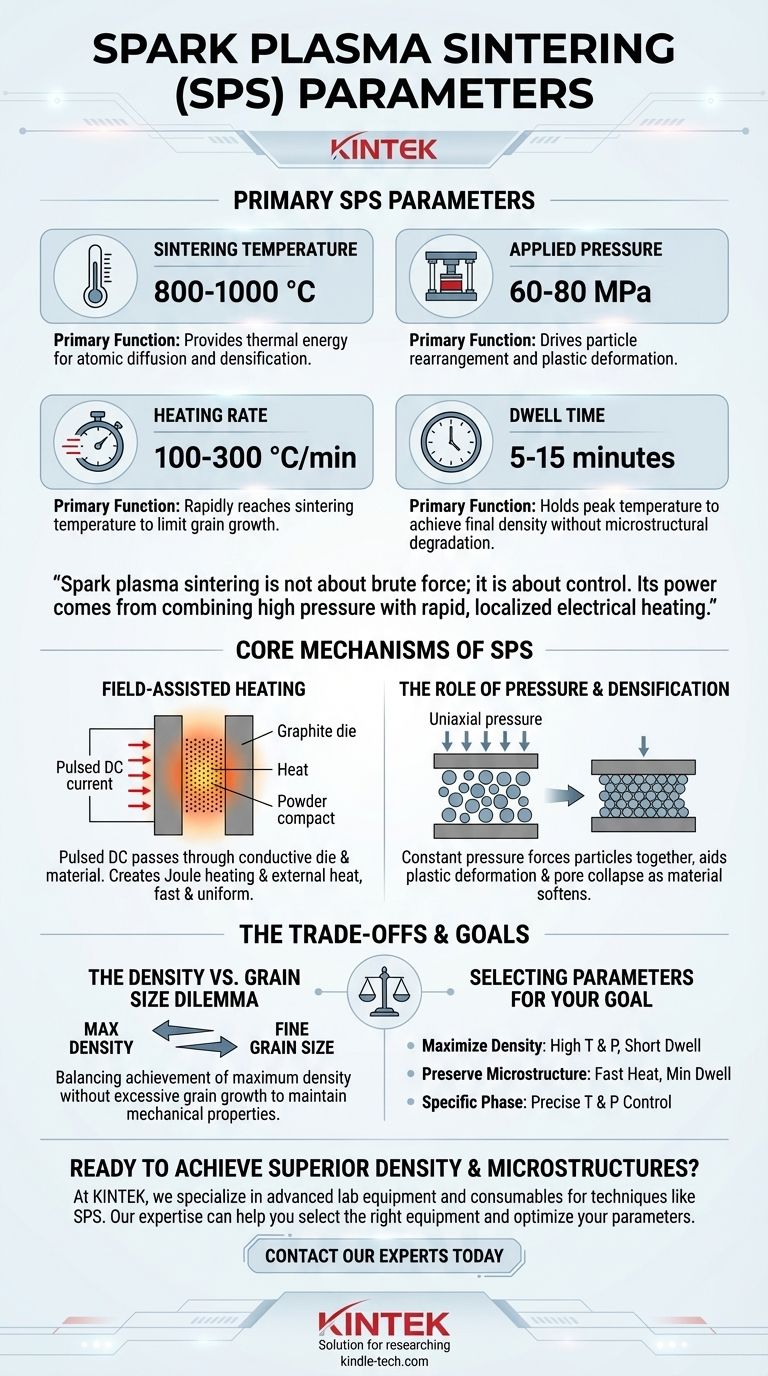
Related Products
- Spark Plasma Sintering Furnace SPS Furnace
- Small Vacuum Heat Treat and Tungsten Wire Sintering Furnace
- Single Punch Electric Tablet Press Machine Laboratory Powder Tablet Punching TDP Tablet Press
- Vacuum Dental Porcelain Sintering Furnace
- Metallographic Specimen Mounting Machine for Laboratory Materials and Analysis
People Also Ask
- What are the applications of spark plasma sintering? Fabricate High-Performance Materials with Precision
- What is the process of plasma sintering? Achieve Rapid, High-Performance Material Densification
- What is the difference between spark plasma sintering and flash sintering? A Guide to Advanced Sintering Methods
- What are the uses of spark plasma sintering? Fast, Low-Temp Fabrication of Advanced Materials
- What is the heating rate of spark plasma sintering? Unlock Rapid, High-Performance Material Densification
